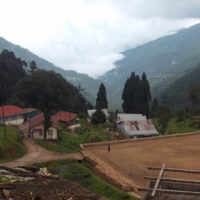CANBERRA – The global water crisis continues to spread almost indiscriminately from continent to continent and nation to nation. Australia heads into the Southern Hemisphere summer with populated portions already reeling from a “serious” to “severe” water crisis as a result of 32 months of drought.
WaterNSW (New South Wales) has experienced extreme low inflows of water entering its rivers and reservoirs. Inflows during the last six months have been the lowest on record. No water in, no water out.

The agency has classified the water crisis as a natural disaster caused only by lack of rainfall. Whereas poor water management has been a contributing factor for water crises in other countries, New South Wales believes that their effective management of water resources has staved off some of the worst effects of the extended drought for as long as a year.
Yet, hope is waning as the rainy season gives way to the heat of summer. Examples of the crisis status include:
The Town of Dubbo
The 40,000 citizens of Dubbo will run out of drinking water by the middle of 2020. The town is preparing for economic disaster. Farmers are not planting crops because the root-zone moisture is too far below average for crops to flourish.
The Town of Warwick
Warwick is already under residential water restrictions of 26 gallons per person per day. Local officials here also fear an economic crisis if the town is not blessed with a substantial and continued rainfall. A “Day Zero” is only months away.
The Town of Walgett
The residents of Walgett have been living on bottled water for a year. To reduce the accumulation of plastic water bottles in the city landfill, the residents are now having 20- to 50-liter jugs delivered to their homes.
Delivered water is an added expense that is difficult for some families to bear. Plus, it doesn’t solve the water crisis. One resident noted that “The bottom line is we’re no different to any other part of regional Australia suffering through the drought. The only real long-term solution is rain.”
Namoi Valley
Water storage is a “critically low levels” at 1.4 percent of capacity. The Namoi River has ceased flowing below its storage dam.
Gwydir Valley
The water storage level is so low that licensed general security users received only 17 percent of their allotment for the last fiscal year. They have received none this year.
Macquarie Valley
The water inflows measured since January 2018 have been consistently the lowest in the country’s history. The reservoir level as of August 16 is at 11 percent. The Macquarie Marshes wetlands are turning into graveyards for dead and dying fish and wildlife from kangaroos to turtles.
Sydney
Reservoirs servicing Sydney have dropped below 50% of capacity, the lowest they have been since 2004. One of Australia’s leading cities, it has been on precautionary water restrictions for the past several months.
Those restrictions primarily restrict outdoor water usage. Water usage dropped by seven percent in July. Nonetheless, officials are already considering moving to tighter restrictions as 75 percent of residential water usage is indoors.
Inflows to Sydney’s reservoirs are the lowest in the past 70 years.
Awater crisis can happen even in a country where water management has been both efficient and effective. Just as Elijah told Israel’s King Ahab, the Lord can stop the rain (and He did), and He can cause it to rain again in abundance (and He did).
The people of Australia would appreciate your prayers for rain.
To read more news on the Global Water Crisis on Missions Box, go here.
Sources:
- Sight, Australian state to cart truckloads of water to drought-hit town
- The Guardian, ‘I don’t know how we come back from this’: Australia’s big dry sucks life from once-proud towns
- The Guardian, ‘Critical’: parts of regional NSW set to run out of water by November
- The Guardian, ‘Dead things everywhere’: is Australia facing the summer from hell?
- WaterNSW, Regional NSW Drought Information
For more information about this, click here.




